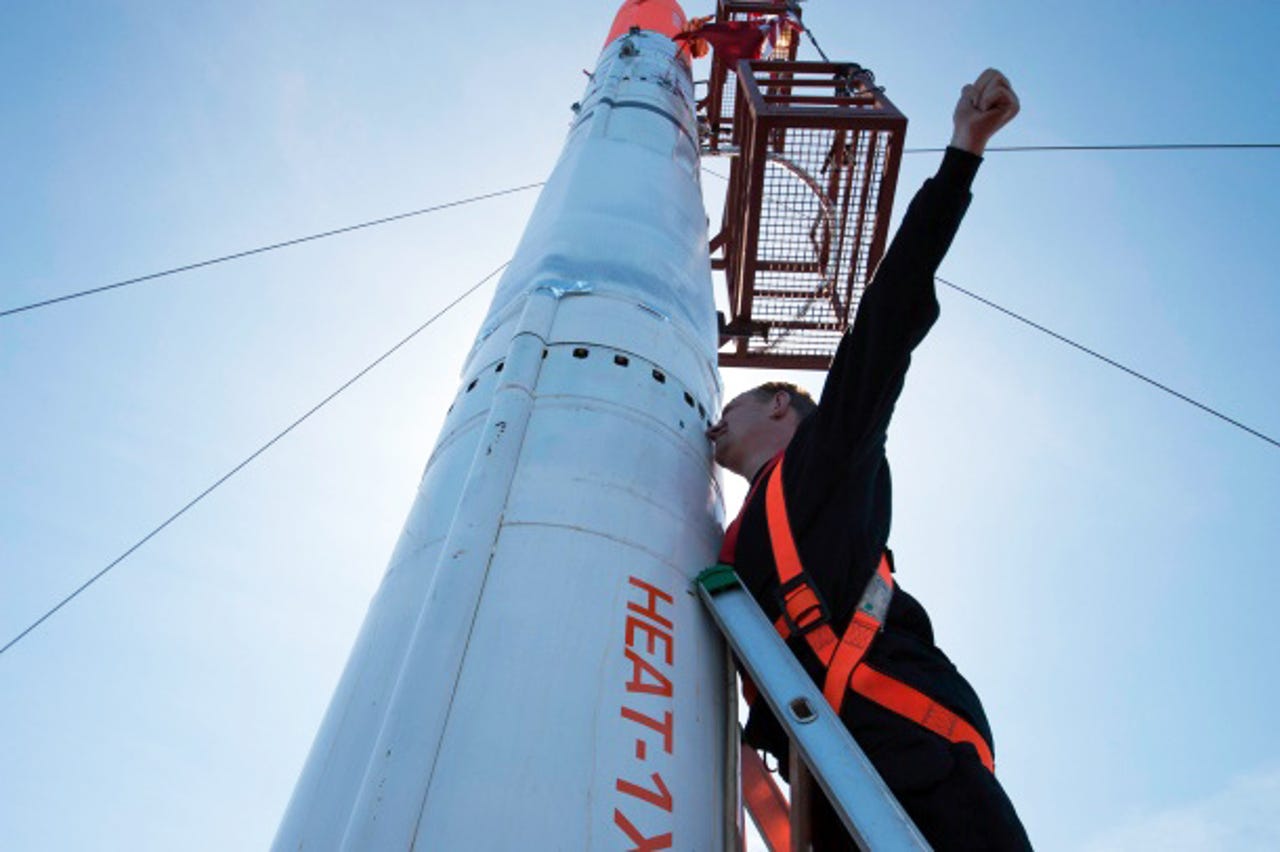'Open-source,' privately-funded rocket lifts off


Copenhagen Suborbitals is a self-described Danish open-source, privately-funded, non-profit organization with a mission to launch humans into space. On Friday in a major test, it successfully launched a rocket and prototype spacecraft from a platform in the Baltic Sea to about 1.7 miles (2.8 kilometers) above the Earth.
The Heat-1X rocket - pictured above prior to launch with engineer and co-founder Peter Madsen inspecting the main oxidizer valve - is the second launch attempt by the team. A liquid oxygen valve failure stymied the previous attempt, made in September. The valve failed because of a power cut to a 100 Krone ($19.70) hairdryer being used to keep it hot.
The rocket held a crash dummy inside a dummy of the Tycho Brahe spacecraft, which is designed to carry one person on a sub-orbital trip into space. The craft is named after a 16th-century Danish nobleman who came up with remarkably accurate astronomical observations for his time.
According to legend, Brahe was also notable for keeping a clairvoyant dwarf named Jepp as a jester, and having an elk that died after falling down the stairs drunk. The nobleman also wore a fake nose made of gold and silver after losing his real nose in a duel.
Copenhagen Suborbitals says it intends to share as much technical information as is possible within EU export control laws. According to the New Scientist, the firm built the rocket for around $70,000.
Captions: David Meyer, ZDUK and Andy Smith ZDNet U.S.
Photo credit: Sonny Windstrup
Here's the Heat -1X rocket with the orange test capsule called Tycho Brahe sitting on top at the launch pad located in the Baltic Sea. It was 31-feet tall and weighed more than 4,400 pounds.
Above, radio specialist Thomas Scherrer adjusts the telemetry antenna array.
The array provided two-way data links with the spacecraft, including continuous video.
Photo credit: Sonny Windstrup
The Tycho Brahe spacecraft originated from these sketches. The actual spacecraft is 3.5 meters (11.5 feet) long and weighs 661 pounds.
Here's a more detailed diagram of the space capsule.
The Tycho Brahe test craft sits atop the rocket while a technician makes last-minute adjustments. This test capsule is a little smaller than the planned final version.
Engineers Kristian von Bengtson (left) and Peter Madsen are the founders of Copenhagen Suborbitals.
When the real Tycho Brahe spacecraft becomes operational, Madsen will be the first to fly it, while von Bengtson will wait until the first proper low-Earth orbit (LEO) flight.
Photo credit: Bo Tornvig
The countdown reaches "0" and the rocket begins to lift off.
Photo credit: Bo Tornvig
The rocket leave a wake of steam and water.
Photo credit: Bo Tornvig
The Heat-1X rocket, shown here in flight, was actually supposed to reach a height of 16km (10 miles) but the flight was cut short when the rocket began to veer to one side. No reason was known.
Photo credit: Thomas Pedersen
The test capsule parachutes back to the Baltic Sea where it is rescued.
Photo credit: Bo Tornvig
The test capsule did receive some heavy damage but was intact.
Photo credit: Bo Tornvig
Here's a look at some more damage to the capsule.
Photo credit: Bo Tornvig
But most importantly the crash-dummy passenger survived the ordeal. Let's hope it was not damaged psychologically.
Photo credit: Bo Tornvig
Here's the mission statement of Copenhagen Suborbitals.